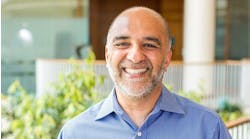Still, commented Meredith Ressi, Manhattan Research’s president, “Growth in access of electronic health records by patients has been remarkable in the last year. There’s been strong pent up demand from consumers over the years, but only now has the supply side caught up as a result of the government mandate. This is the beginning of a real shift in care delivery and patient engagement.”
Well. Let’s begin by noting, of course, that the numbers and percentages the Manhattan Research people came up with here are extrapolated; obviously, they didn’t interview 56 million consumers who have accessed their personal health information via their physician-based EHR, nor did they interview the 140 million “not interested in accessing medical records form an EHR system maintained by their physician.” So, as in the case of any public poll, we’ll have to trust the research methodologies of the Manhattan Research people here.
Having functionally accepted their methodology for purposes of argument, for the moment (see more about this below), one could read these survey tea leaves a number of different ways. On the one hand, the implication of the Manhattan Research report is that the number of consumers wishing to engage with their physician-based EHRs is on the rise, perhaps significantly (though this was not explicitly stated in the Oct. 12 press release). On the other hand, the fact that nearly two-and-a-half times the number of survey respondents who have accessed their PHI via their EHRs have not done so, and furthermore, according to the study, are not interested in doing so, is cause for pause.
I fully understand that many patients in their 70s and above may never wish to interact with their EHRS, either via some sort of PHR or in some other manner (though a surprising percentage of older patients are online and do represent the “new healthcare consumer” one always hears about). Still, the percentage cited by the Manhattan Research people as not being interested strikes me as overly large. “IMHO,” as they say online, I believe that lumping the “have not yet accessed their medical information via EHR” people with those “not interested—in other words, assuming a lack of interest—was indeed a methodological mistake on the part of the Manhattan Research people.
And I believe that as physician EHR implementation, prodded by the meaningful use and healthcare reform processes, accelerates dramatically, these numbers will change as well. Above all, for the healthcare consumers/patients who are active users of the Internet in their daily lives (which, let’s face it, is most non-retired people these days), I think there will be a natural uptick in engagement around the EHR in the coming years, particularly among the middle-aged (including this writer!) who are both engaged both in daily online activity for work and leisure, and who have health concerns and are active users of the healthcare delivery system.
So a few years from now, I would expect the numbers to change on survey-based studies like this. And, I’ll add, I would expect the methodologies and interpretations to change somewhat as well.



